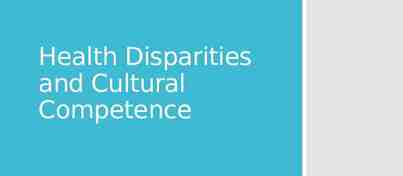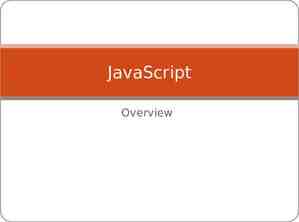Research smarter with Web of Science & EndNote Essential tips for
31 Slides8.96 MB

Research smarter with Web of Science & EndNote Essential tips for every researcher Jamal El Ouahi Head of Customer Education Services June 2020

Context Finding the relevant research in your field is critical to a successful research project This can be one of the hardest, most time-consuming challenges for academics. The research ecosystem is a sprawling, ever-changing landscape. Each field has a rich and divergent history, and new avenues for investigation are springing up every day.

Proposition Few steps every researcher should take to leverage the citation network to complete an in-depth, comprehensive search for literature in Web of Science. Insights about: How you can find an article Quickly assess its impact Create alerts to keep track of new papers in your field

5 Steps 1. Choose the right database for your search 2. Master the keyword search 3. Filter your results and analyze for trends 4. Explore the citation network 5. Save your searches and set up alerts

1. 1. Choose the right database for your search

1. Choose the right database for your search The myriad search engines, databases and data repositories can be tricky for researchers to navigate. They all differ in reliability, relevancy and organization of data. The Web of Science is publisher-neutral, carefully-curated by a team of expert editors

1. Choose the right database for your search The Web of Science Core Collection database only includes journals that have met rigorous quality and impact criteria It includes billions of cited references captured from globally significant journals, books and proceedings (check out its coverage)

1. Choose the right database for your search

2. Master the keyword search

2. Master the keyword search Your chosen keywords or search phrases cannot be too inclusive or limiting They require constant iteration as you become more familiar with your research field. Read our guide on search tips to learn more. You can also view our Quick Reference Guide to help get you started with your literature search on Web of Science.

Powerful Search

3. Filter your search results and analyze trends

Filter your Results

Sort publications

Institutions Funding Agencies Authors Journals Open Access Books Conferences Countries Analyse Search Results

4. Explore the citation network

4. Explore the citation network Identify seminal research in any field by paying attention to the number of times a paper is cited. Track the advancement of research as it progresses over time by analyzing the papers that cite the original source (this will also help you catch retractions and corrections to research). Track the evolution of research backward in time by tracking the research that a particular paper cites. View related references – if papers share citations (calculated from bibliographic coupling), they’re likely discussing similar topics.

5. Save your search and set up alerts

5. Save your search and set up alerts Save time and stay up-to-date with new research in your field by saving your searches and setting up email alerts. This means you can return to your search at any time, and stay up-to-date about new papers included in your search result.

EndNote Online Collect, manage, share and format your references

Context Sourcing, organizing and formatting citations is tedious work, but crucial to publishing robust research. With this in mind, the number of citations is on the rise: Citations indexed in the Web of Science Core Collection in 2019 Citations used per research paper on average in 2019 Growth in total number of citations in past 10 years

EndNote Win more time for your research content It’s no longer necessary to spend hundreds of hours manually collecting and curating your research materials and formatting bibliographies. EndNote will help you automatically create, format and update bibliographies with the convenience of remote access.

EndNote Using EndNote, you can: Easily collect and save large libraries of references to take with you and access remotely, Add citations and complete your bibliography while you write, without the need to use disparate systems, Choose from hundreds of stylistic formats, which can be converted to match the requirements of any new journal you submit to.

Demo

Thank you!

Web of Science World class data to support world class research 2020 Clarivate Analytics 26

Web of Science Platform Multidisciplinary research experience across the sciences, social sciences, and arts and humanities 34,000 87 million Journals across the platform Patents for over 43 million inventions 21,000 8.9 million Total journals in the Core Collection Data Sets and Data Studies 1.8 billion Backfiles to 1900 Cited references With cover-to-cover indexing 166 million 218,000 Records Conference proceedings 12.6 million 111,000 Records with funding data Books Statistics as of February 2020 2020 Clarivate Analytics 27

Web of Science Core Collection Science Citation Index Expanded Social Sciences Citation Index Arts & Humanities Citation Index Emerging Sources Citation Index Research with confidence using a publisher-neutral citation index 21,000 journals indexed cover-to-cover Multidisciplinary International Influential Powerful citation network with complete cited reference search, cited reference linking and navigation Unbiased journal selection and curation Source data for Journal Impact Factor Conference Proceedings Citation Index Book Citation Index Master Journal List 2020 Clarivate Analytics 28

Editorial integrity Research with confidence using a publisher-neutral citation index Find what you need more quickly Journals are curated by experts with: Make high stakes decisions about research funding, resource allocation, and people with data that is independent of bias 150 years of experience Fluency in 12 languages 0 affiliations with any journals or publishers Using: 28 criteria More information 2020 Clarivate Analytics Insert footer 29

More researchers rely on the Web of Science Core Collection than on Scopus and Google Scholar for systematic review and research evaluation. Read ISI's Value of Bibliometric Dat abases Report 2020 Clarivate Analytics 30

Independent studies confirm Web of Science quality indexing Web of Science data provide you with discovery and analytics superior to competitor tools “ the data recorded in [Web of Science] is generally more curated than the data in Scopus. Scopus is a combination of data that have been collected from several sources, and there are a number of telltale signs Côté, G., Roberge, G., & Archambault, É. (2016). Bibliometrics and Patent Indicators for the Science and Engineering Indicators 2016: Comparison of 2016 Bibliometric Indicators to 2014 Indicators. “It turns out that according to our citation-based criteria, Web of Science performs significantly better than Scopus in terms of the accuracy of its journal classification system. Wang, Q., & Waltman, L. (2016). Large-scale analysis of the accuracy of the journal classification systems of Web of Science and Scopus. Journal of Informetrics, 10(2), 347–364. doi:10.1016/j.joi.2016.02.003 “The largest proportion of articles with funding information was found in Web of Science (29%), followed by PubMed (14.6%) and Scopus (7.7%). Kokol P, Vošner HB. (2018). Discrepancies among Scopus, Web of Science, and PubMed coverage of funding information in medical journal articles. Journal of the Medical Library Association. 2018, 106(1), 81-86. doi:10.5195/jmla.2018.181 2020 Clarivate Analytics 31






